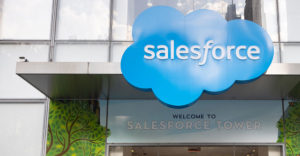The signs and symptoms of the tech world’s decline in 2022 abound. “Peak Tech,” suggests writer Brian Merchant in an article from The Atlantic titled “The End of the Silicon Valley Myth.” His blunt pronouncement: “The companies that define our digital lives have hit a wall.” If true, it’s a serious indictment and raises the critical question: What’s next?
In one domain after another, Merchant documents systemic rot. Amazon Web Services’ profits power much of the rest of the organization as it tries to break even while opposing unions and pursuing questionable business and employment practices.
Or Sam Bankman-Fried and the cratered FTX crypto exchange. Then there’s Mark Zuckerberg’s Meta initiative which Merchant says looks “more like a Hail Mary fantasy, a beleaguered CEO’s escape attempt to a 3D virtual world where he might leave behind the misery of his dull 2D version.”
Let’s skip Elon, as he’s gotten enough press lately, and you know that story. There’s also the example of Elizabeth Holmes, who just got eleven years for the fraud of Theranos.
In all this, Merchant asserts that tech businesses have been exposed for having no model other than to get big and rich — but what would you expect for business plans written on cocktail napkins?
Now that they’ve become some of the most successful businesses on the planet, they are turning to rent seeking, an economic term that indicates attempts to gain size and profit from existing sources without adding value like, you know, productivity. As an example, Merchant cites Apple now selling advertising while it has not “released a culturally significant new product line since 2016’s AirPod.”
Big Tech Is Stumbling, Bewildered
Big Tech comprises some of the hugest companies in history, yet they seem to be stumbling around, asking in unison what’s next. What happens after our dubious business models are spent, and we’ve achieved, if not all our dreams, certainly much more than we might have dared hope for?
What’s next isn’t just a question for the movers and shakers of the tech world. It’s the mantra of all of us who followed blindly into a future that promised impossibly more than it could deliver. More information, more communication, more happiness, more of whatever we saw in the mirrors entrepreneurs held up to us.
But now? Zuckerberg retreats into his 3D world and beckons us to follow, but there are few takers. Bankman-Fried points to a vibrant new economy run on a blockchain you don’t have to trust, so nobody does. It’s open season for money launderers — talk about a business model.
Last year I made the observation that many in the tech boys club had not mastered the fundamentals of the whole product or of how to treat people — be they customers, partners, or employees — like stakeholders. But it’s increasingly hard to see how tech scrapes itself off the wall without getting some new religion concerning customers.
CRM Has Staying Power
Yet, amid all the business model burnout, one of the oldest parts of the tech world is CRM, and it’s doing fine, thank you. There was CRM long before social media existed, before the browser ruled the desktop, before there were handheld devices, and even before cloud computing. CRM’s staying power in today’s turbulence comes from its simple orientation toward customers.
While the industry has certainly grown over the last 20-plus years and business models came and went, CRM’s constant has been the customer — and not just the customer but the idea of doing good by and for the customer. No CRM business model that only included growing fast and becoming insanely rich had a chance unless it focused on the customer.
But CRM is not a panacea. Do some vendors today leverage CRM to do un-customer-friendly things? Yes. Are they successful? Yes, some are but only fleetingly. That’s because, for every vendor trying to abuse CRM, many more are trying to do right by the customer, and the comparison is striking.
Of all the companies mentioned above, which one has a CRM system lauded throughout the industry? Time’s up.
The model for success in CRM always went through first helping customers do right by their customers, but then also helping the second generation of customers help their customers in turn, and not just customers but stakeholders — employees, partners, localities — all of them.
Salesforce and the Virtues of Philanthropy
No company did more in the last couple of decades to put the customer in the focal point than Salesforce.
It was a quirky but ultimately shrewd thing at first watching Marc Benioff extol the virtues of his philanthropy model. He focused on doing good, even or especially for people who were not customers, many of whom would never be. He used philanthropy, the thought of helping others, to open minds, and to make us think of using the golden rule in business.
In a world where it was the gospel that no one ever lost money underestimating the public, Benioff and Salesforce took the long view and bet on humanity’s innate goodness. What startup thinks about humankind?
Keynes famously observed that in the long run, we are all dead, but to amend that, before we get to the very end, there might be a resting place where we all get to see the results of our bargains with business models Faustian or otherwise.
CRM’s Next Act
Here, in the midst of Peak Tech, we can look around at the business models that worked and those that are crashing; we can see the entrepreneurs whose vision included growth and little else; we can see the dogs who caught the growth and profits bus. Now, as the central importance of doing the right thing comes into high relief, maybe we should all take some measure of pride in working in CRM.
As we contemplate the year ahead and CRM’s inevitable next act, possibly the most enduring product of our industry may be the modernized focus on stakeholders. We’ve come full circle from the concept in some economic camps that the corporation’s purpose is to generate profits for shareholders, to an older notion of benefitting stakeholders (who include shareholders) as the key to success.
Maybe some future opinion writers will look at January 2023 as the turning point from the growth-at-any-cost business model to a focus on stakeholders. Perhaps they’ll call it the CRM model. Maybe it’ll be casually referred to as the Salesforce model.

























































